Painting lines on soccer and football fields? That's a job robots can do now.
Published in Soccer
LOS ANGELES — Shaun Ilten had a problem. The senior director of turf and grounds for the Galaxy and Dignity Health Sports Park had 26 full-size practice fields, two game fields and a warm-up pitch to line ahead of last winter's Coachella Valley soccer tournament. And he had less than five days to do it.
Since it takes three people nearly two hours to lay out and paint boundary lines on just one field, the math said Ilten wasn't going to make it.
"It's just not possible to do it all by hand," he said.
So he decided to skip the hand part and give the task to a couple of robots, who were able to square out and paint each field in about a quarter the time human hands would have needed. Without the robots, the largest preseason professional soccer event in the U.S. would have necessarily been a lot smaller.
"There would just be no way that it would be humanly possible," Ilten said.
What made it possible was Turf Tank, a GPS-linked machine about the size of large beach cooler that can paint athletic fields of any size for any sport. It was the brainchild of Jason Aldridge, an Atlanta-based entrepreneur with a long history of using technology to innovate workplaces, from restaurants and telecommunications to shipping and sports.
The idea of using technology and robotics to relieve groundskeepers of the drudgery of striping athletic fields came to Aldridge about nine years ago, while he was watching business-reality TV show "Shark Tank" with his son. It was, he said, an ancient ritual that needed a modern solution.
"Even back to the Olympics in ancient Greece, they used to line the lanes to run the sprints," he said.
Months later he partnered with Denmark developers, who four years earlier had designed a prototype robot based on a similar concept, and in 2017, he said, he sold his first two Turf Tanks to the Sozo Sports Complex in Yakima, Wash., and the Commonwealth Soccer Club in Lexington, Ky.
Since then Turf Tank has grown into a company with more than 200 employees, tens of millions of dollars in annual sales and 5,000 clients, among them San Diego FC, the Galaxy, LAFC, Angel City, eight NFL teams and hundreds of colleges, including Pepperdine, California, UC Santa Barbara and Loyola Marymount. Turf Tank also drew the stylized on-field logo for last month's MLB All-Star Game in Atlanta.
Two other Danish companies — Traqnology and TinyMobileRobots, whose robots have marked more than 2 million fields worldwide, the company says — offer similar services, as does the Swiss company Swozi and Singapore's FJDynamics. But Turf Tank claims to be the dominant force in the U.S. market.
The Turf Tank robots, which weight up to 132 pounds and can hold 5.3 gallons of paint, are controlled by a computer tablet and guided by GPS technology linked to a portable base station, which acts as a reference point. All a user has to do is enter the dimensions of the field — the length of the sidelines, the width of the field — into a tablet and the robot does the rest in as little as 24 minutes.
Still the concept of autonomous robots was a tough sell for people who are used to doing things by hand and not on a keyboard. Although it sounded like a good idea, most groundskeepers had to be convinced of the accuracy and reliability of the robots.
Aldridge tried to sell the University of Alabama on the technology for Bryant-Denny Stadium on a scorching July day. The Turf Tank drew the horizontal and vertical lines without issue but the grounds crew director was certain it couldn't match the precision and accuracy needed to paint hash marks down the center of the football field. So Aldridge took him to lunch and when they returned there were 160 perfect hash marks, each four inches wide, two feet long and 60 feet from the sidelines.
The University of Alabama, Aldridge said, now has three robots, two for athletics and one for intramural fields.
Ilten also had more doubt than conviction at first.
"I was skeptical when they first reached out to me, just because of how it works. It's all GPS. If something gets in its way, is it going to go rogue?" he said. "But they brought it out, did a demo and I measured the lines after it was done and they were within a centimeter."
That was 2019 and Ilten now has three robots at Dignity Health Sports Park which he uses to line the main stadium field for football, rugby and lacrosse and the surrounding practice fields for soccer. (For Galaxy games he prefers to mark the pitch the old-fashioned way, with a wheel-to-wheeler roller, which allows him to use a thicker and brighter paint.)
"It just makes everything a little bit more efficient," said Ilten, who manages a staff of 20. "Instead of having two or three guys take an hour and half to line a field, I can send one guy out and it takes 35-40 minutes."
But the bulk of Turf Tank's customers don't come from pro or major college teams. The time-saving the robots bring can be life-changing for high school groundskeepers and local park directors, who often must line multiple fields in a day.
"It was a pain point," said Aldridge, 48. "They go to school to learn how to grow grass. Painting a field has kind of been that part of the job that wasn't what they really wanted to do, but it was a huge necessity.
"It's like the icing on the cake, right? Building a beautiful field, that's kind of where our robots come in."
©2025 Los Angeles Times. Visit latimes.com. Distributed by Tribune Content Agency, LLC.
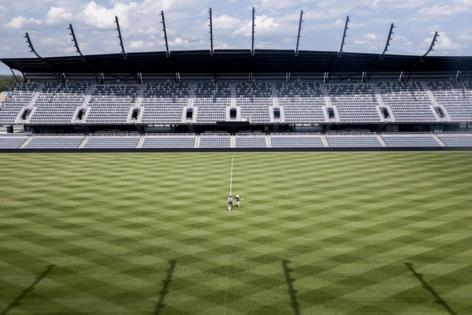
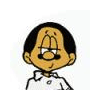
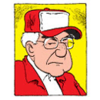
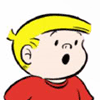
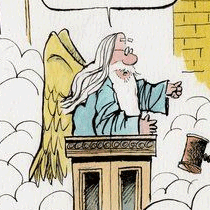
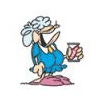
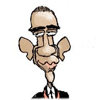
Comments